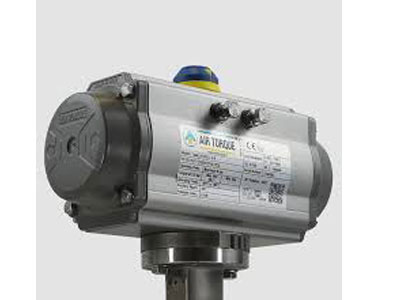What Is The Working Principle Of Pneumatic Cylinder?
Key Takeaway
A pneumatic cylinder works by converting the energy of compressed air into mechanical motion. Compressed air enters the cylinder, which creates pressure that pushes the piston inside. This movement is directed and controlled by the pressure difference inside the cylinder. The piston then transfers this force to the attached load, producing either linear or rotary motion.
The movement of the piston can be single-acting or double-acting, depending on the design. In single-acting cylinders, air is used to move the piston in one direction, and a spring returns it. Double-acting cylinders use compressed air to move the piston in both directions, allowing for more control. Pneumatic cylinders are commonly used in various industries for tasks like clamping, positioning, and lifting due to their efficiency and simple design.
Introduction to Pneumatic Cylinders
Pneumatic cylinders, also known as air cylinders, are mechanical devices that use compressed air to produce linear motion. These cylinders are a cornerstone of modern automation systems, offering simplicity, efficiency, and reliability in various industrial applications. Their primary purpose is to perform repetitive tasks such as pushing, pulling, clamping, or lifting, all with consistent precision.
A pneumatic cylinder operates by converting the energy stored in compressed air into mechanical motion. This motion is typically linear, making these cylinders ideal for tasks requiring controlled, straight-line movement. They come in different types, such as single-acting, double-acting, and rodless cylinders, each suited to specific applications.
For engineers new to the field, understanding the working principle of pneumatic cylinders is crucial. These devices are not just components of a system; they are vital for ensuring smooth and efficient operation in automated processes.

The Role of Compressed Air in Generating Motion
Compressed air serves as the driving force behind pneumatic cylinders. The principle is simple yet effective: air is pressurized and directed into the cylinder chamber through an inlet port. As the air fills the chamber, it exerts pressure on a piston, forcing it to move.
The direction and extent of this motion depend on the cylinder type. In a single-acting cylinder, air is used to move the piston in one direction, with a spring or external force returning it to its original position. In contrast, a double-acting cylinder uses air pressure on both sides of the piston, enabling motion in both directions.
One significant advantage of using compressed air is its availability and safety. Unlike hydraulic systems, which rely on fluids, compressed air is clean and poses no risk of contamination. Additionally, air systems are lightweight and respond quickly, making them ideal for tasks requiring fast and precise motion.
How Force is Applied to Create Linear Motion
The application of force in a pneumatic cylinder begins with the piston, a key internal component. When compressed air enters the cylinder, it pushes against the piston, creating force. The magnitude of this force depends on two factors: the air pressure and the surface area of the piston.
For example, a larger piston surface area or higher air pressure results in greater force. This relationship is described by the formula Force = Pressure × Area. Engineers often calculate these parameters to match the cylinder’s capabilities with the application’s requirements.
The motion generated by the piston is typically linear, making pneumatic cylinders suitable for tasks like lifting, clamping, or pressing. The direction of motion is controlled by valves, which regulate the flow of air into and out of the cylinder. In applications requiring bi-directional motion, double-acting cylinders are used, as they apply force in both extension and retraction.
This precise control of force and motion ensures that pneumatic cylinders perform consistently, even in demanding industrial environments.
Key Components That Drive Cylinder Functionality
Pneumatic cylinders rely on several critical components to function effectively. At the heart of the system is the piston, which moves within the cylinder body in response to air pressure. The piston rod, connected to the piston, transmits this motion to external components or loads.
Seals play a vital role in maintaining efficiency by preventing air leaks and ensuring smooth motion. High-quality seals are essential for maintaining consistent performance and extending the cylinder’s lifespan. The end caps enclose the cylinder and house the air ports for the inlet and exhaust of compressed air.
Control elements like directional control valves and flow regulators manage the air supply, ensuring precise operation. These components allow engineers to adjust speed, force, and motion direction as needed.
Other features, such as cushions or stops, help dampen the impact of the piston at the end of its stroke, reducing wear and noise. Together, these components ensure the reliability and versatility of pneumatic cylinders in various industrial applications.
Factors Influencing Efficiency and Performance
The efficiency and performance of pneumatic cylinders depend on several factors, starting with the quality of compressed air. Contaminants like moisture, oil, or dust can damage internal components, leading to reduced efficiency and shorter operational life. Using air dryers and filters is essential to maintain clean air in the system.
Pressure regulation is another critical factor. Operating a cylinder outside its optimal pressure range can result in inconsistent motion or mechanical failure. Engineers use pressure regulators and gauges to ensure that the system stays within safe limits.
Proper alignment and sealing are equally important. Misaligned cylinders can cause uneven wear on the piston rod and seals, while leaks reduce the system’s overall efficiency. Regular maintenance, including inspecting seals and lubricating components, helps maintain performance.
By addressing these factors, engineers can optimize the reliability, precision, and lifespan of pneumatic cylinders in their systems.
Conclusion
The working principle of pneumatic cylinders revolves around converting compressed air into linear motion, enabling a wide range of industrial applications. These cylinders rely on key components such as pistons, seals, and valves to perform tasks with precision and efficiency.
By understanding their operation and addressing factors that influence performance, engineers can ensure the smooth and reliable functioning of pneumatic systems. Pneumatic cylinders remain an indispensable part of industrial automation, driving productivity and innovation across industries.

